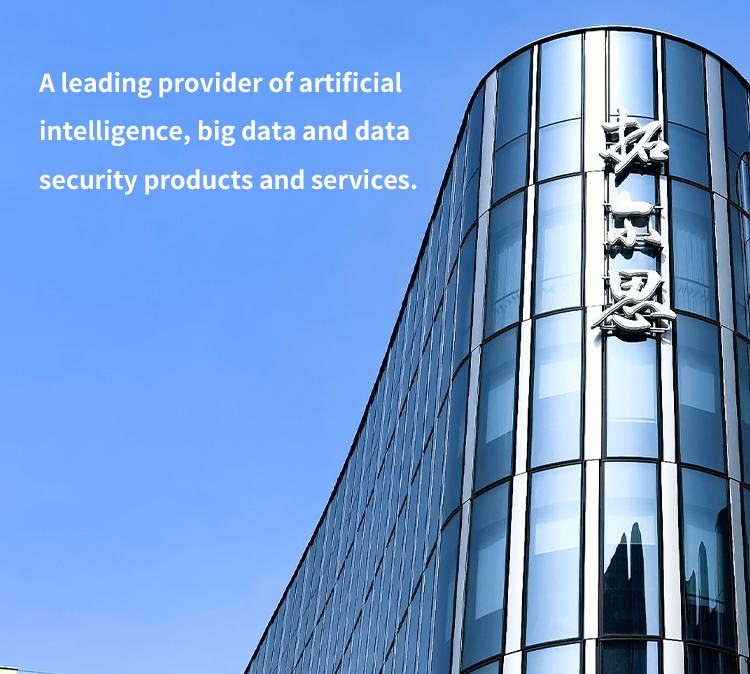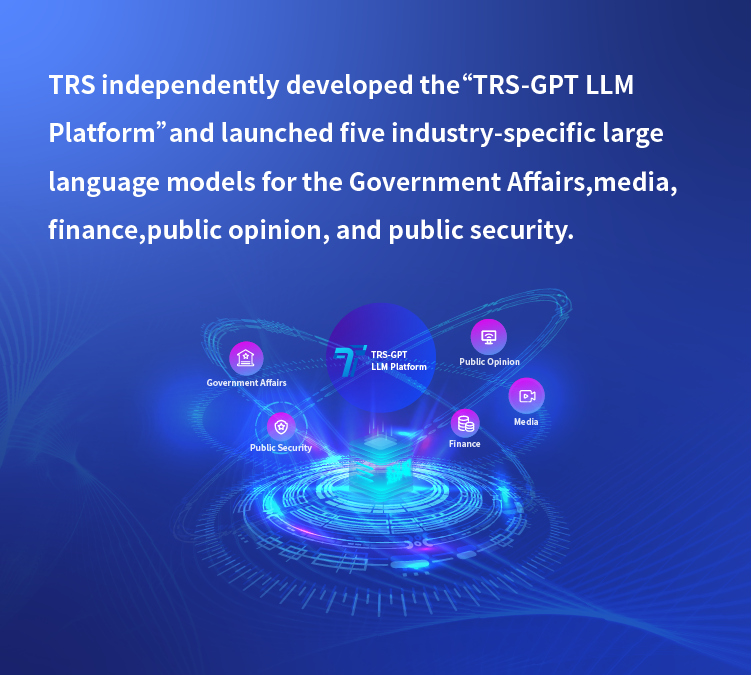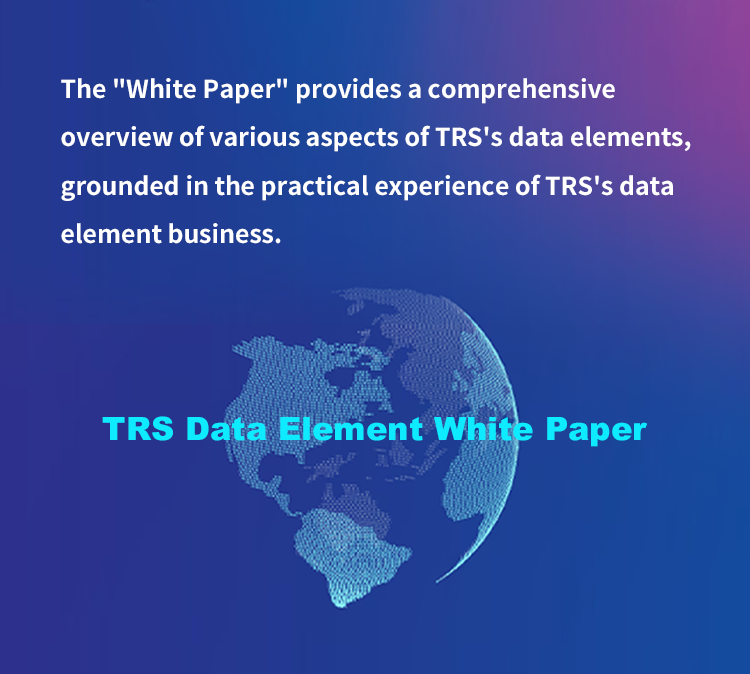From data listing to in-depth insights: How TRS-GPT LLM uses DeepSeek distillation technology to enhance the combat effectiveness of public security's new quality
Time: 2025-03-14After Public Security TRS-GPT is connected to DeepSeek, it carries out precise distillation of parameters and high-quality re-governance of professional knowledge in combination with actual combat application scenarios, and integrates reasoning ability and non-reasoning ability into the same model. This innovation not only significantly improves the quality and efficiency of clerical work, but also provides more comprehensive and in-depth support for police decision-making.
Model optimization: from parameter stacking to precision distillation
DeepSeek distillation optimization technology has far-reaching significance and importance in the application scenario of public security actual combat, which can significantly improve the intelligent level and execution efficiency of police work. The field of public security involves massive data processing and complex decision-making tasks. Traditional methods often face challenges such as large computing resource consumption and slow response speed. The core of DeepSeek distillation optimization technology lies in transforming complex large models into efficient and lightweight versions through model compression and knowledge migration, greatly reducing computing costs while ensuring high accuracy, and maintaining its high performance, making it more suitable for deployment on edge devices or Mobile device, meeting the needs of real-time and high efficiency in public security actual combat. In the implementation of public security actual combat application scenarios, the following technical links are particularly critical.
First, optimization of problem classification and intention recognition is the foundation. Through precise classification and intent understanding of input data, the model can quickly locate the core problem and provide clear direction for subsequent processing. With DeepSeek's powerful pre-training capabilities and multimodal understanding techniques, TRS builds more accurate problem classifiers and intent recognition modules that enable the model to better capture user intent in professional scenarios, distinguishing between simple queries (such as factual questions) and complex problems (such as those requiring logical reasoning or industry expertise). For example, in a public security scenario, accurately distinguishing between types of alerts (such as theft, traffic violations, emergencies) is a prerequisite for efficient response. Through the optimized model, the system can quickly identify key elements in alarm information, automatically classify and assign them to the appropriate departments, greatly reducing response time.
Secondly, complexity evaluation and reasoning decision-making are the core of technology landing. DeepSeek model architecture supports dynamic evaluation of problem complexity. By using its built-in complexity evaluation module and combining the characteristics of grass-roots police case judgment business scenarios, TRS defines finer-grained complexity indicators (such as technical term density, logical chain length, etc.), so that DeepSeek's reasoning engine can be seamlessly integrated with the complexity evaluation module to realize the automatic process from problem identification to reasoning decision. At the same time, distillation technology is used to optimize the computational complexity of the model, so that it can run efficiently on resource-constrained devices while maintaining the accuracy and real-time of reasoning.
Finally, the injection and optimization of professional knowledge is the key to improve the actual combat ability of the model. In complex police scenarios, problem solving often depends on professional analytical logic and domain knowledge. The professional knowledge governance of public security application scenarios is a systematic project involving knowledge acquisition, standardization, injection, update, fusion and sharing, including:
Construction of public security exclusive knowledge atlas: extract key information from multi-source data such as laws and regulations, police cases, cases, intelligence information, expert experience, etc., and construct structured knowledge atlas. The knowledge graph includes entities (e.g. suspects, type of case, location), relationships (e.g."involved" and "occurred at"), and attributes (e.g. time, frequency). Example: In a crime prediction scenario, knowledge graphs can help models identify high crime areas and times, and combine historical data to predict the types of crimes that may occur in the future.
Standardized data governance: Clean, label and standardize multi-source heterogeneous data (such as alarm records, surveillance videos, social media information, and population data) in public security business to ensure data consistency and availability. Example: In a case analysis scenario, normalized alarm records help the model quickly classify cases (e.g. theft, traffic violations, emergencies) and automatically assign them to appropriate departments. In video surveillance analysis, standardized face, license plate and behavior data can improve the accuracy of model recognition of abnormal behavior. In this step, ontology and labeling technology are mainly used, combined with knowledge graph to build, manage and optimize domain-specific knowledge representation frameworks, similar to the capabilities of Palantir Foundry.
Domain knowledge injection and fine-tuning: integrate professional knowledge of public security field (such as laws and regulations, criminal psychology, investigation skills, etc.) into the model training process, fine-tune the model through domain-specific data, so that it can master industry terminology, analysis logic and decision-making rules. Example: In the special issue generation scenario, the model can automatically extract key information from massive case data, combine professional knowledge to generate high-quality reports that meet police specifications, and provide support for leadership decisions.
Dynamic update and iterative optimization: Establish a knowledge update mechanism, regularly extract new knowledge from the latest cases, regulations, and expert experience, and dynamically update the knowledge base and models to ensure that they keep pace with the times. Example: After the law and regulation are updated, the model can adjust the judgment logic in time to ensure the compliance of the law enforcement process.
Multi-modal knowledge fusion: Multi-modal data such as text, image, video and audio are fused to build a more comprehensive knowledge system and improve the comprehensive judgment ability of the model. Example: In major event security, multimodal knowledge fusion can help models quickly identify suspicious people, vehicles, and items to ensure event security.
Combination of expert experience and AI: transform the experience of public security experts into rules or case libraries, and combine them with AI models to form a collaborative model of "expert +AI". Example: In case detection, the model can quickly screen out key clues according to the investigation direction recommended by expert experience. In emergency planning, the model can combine historical cases and expert experience to generate the optimal Incident Response Service plan.
Smart Base: From Single-Mode Access to Multi-Mode Coevolution
AI empowerment is a systematic project, not a single large model can be achieved, but a complete intelligent base needs to be built to help organizations deeply integrate artificial intelligence and machine learning technologies into business processes and decision-making systems. At its core is AI-driven insight and automation to improve an organization's operational efficiency, decision quality, and innovation capabilities.
TRS takes TRS-GPT LLM Integration Platform as the core, and on the basis of the original large model base, it newly adds DeepSeek V3 and R1 as its new basic model, further enriching the model ecology and improving the flexibility and capability coverage of the platform. The platform supports multi-model integration and dynamic optimization, and can automatically adjust model invocation strategy according to real-time data and business requirements to ensure that the system always runs in an optimal state. This multi-model collaboration capability not only enhances the flexibility and adaptability of the system, but also gives full play to the advantages of each model to achieve more accurate analysis and decision-making. Through dynamic invocation, reduce the resource consumption of a single model and improve the overall efficiency. This ability for multi-model collaboration fits well with Palantir AIP's philosophy of meeting complex business requirements through flexible model combinations.
TRS-GPT LLM Integration Platform is also seamlessly integrated with TRS's "one center and five middle platforms"(capability center, data middle platform, knowledge middle platform, business middle platform, technology middle platform and AI middle platform) to form a systematic intelligent base. This base realizes multi-module collaboration, integrates DeepSeek, data governance tools, industry knowledge base, reasoning engine, AI Agent construction and other modules, and realizes the full process automation from data input to agent output.
After the intelligent base is upgraded as a whole, it can realize seamless integration with other systems with zero coding efficiency, reducing the difficulty of development. This enables TRS to handle complex industry problems end-to-end, significantly improving overall system performance. Through multi-model access and multi-module collaboration, TRS's intelligent base not only realizes the transformation from data to knowledge, but also further promotes the transition from knowledge to intelligent decision-making, providing strong technical support for intelligent upgrading of the industry.
Alert Analysis: From Data Listing to Deep Insight
In the previous version of AI police assistant, TRS-GPT LLM obtains real-time alarm, case, public opinion and other data within its jurisdiction through data connector, mainly uses the intention recognition and context understanding ability of large model, and the analysis ability is relatively simple, staying at the surface summary stage. The analysis results are mainly data listing, lacking in-depth insight and reasoning.
Based on the integration of reasoning and non-reasoning ability, DeepSeek's powerful data analysis and logical reasoning ability are fully utilized to carry out multi-dimensional and refined judgment on the case, which can not only quickly and automatically generate the case analysis report, but also identify the potential crime pattern and trend through reasoning ability. In addition, DeepSeek also systematically learns the work instruction requirements under different alarm abnormal situations, forming a work instruction library. While generating alarm analysis reports, DeepSeek can also automatically and intelligently generate work instruction references, providing scientific decision-making basis for the intelligence center and the command rooms of each police station.
For example, when analyzing the case data of a certain area in a certain period, AI police assistant can not only count the number and distribution of cases, but also predict the characteristics, causes and social impact of such cases by combining multi-dimensional information such as time, place and modus operandi. This not only reflects the distinctive business characteristics, but also puts forward specific prevention suggestions at the end. For example, in the question of "in-depth analysis of burglary characteristics", the new version of AI police assistant shows all-round professional analysis ability, covering multiple dimensions such as time characteristics, crime object, stolen article characteristics, modus operandi and potential reasons, and gives practical suggestions and measures based on the analysis results.
Quality and efficiency improvement: leap from efficiency to strategic support
The new AI police assistant has been put into trial operation, and the automatic generation ability of case judgment has realized the multi-dimensional intelligent leap from data listing to in-depth analysis to prevention suggestions, helping grass-roots police officers to shift from "writing reports" to "making decisions", and improving efficiency and quality greatly. It can help police predict future crime trends and optimize police deployment by analyzing historical data.
Time saving: Through automated data processing and report generation, the police document processing time has been saved by 80%, which has basically reached the actual combat level and greatly improved the work efficiency.
Quality improvement: DeepSeek not only generates more comprehensive and accurate case reports and case analysis, but also has in-depth insight capabilities, providing strong support for police decision-making.
Strategic value: Through deep mining and inference analysis of historical data, DeepSeek can help police predict crime trends, optimize police deployment, and realize the transition from passive response to proactive prevention.
The new access to DeepSeek V3 and R1 in Public Security TRS-GPT LLM not only enriches the base model ecology, realizes the "double sword combination" of reasoning and non-reasoning ability, but also promotes the overall leap of police work from efficiency to strategic support through the overall upgrade of intelligent base. This upgrade enables the platform to handle complex cases more accurately, generate high-quality reports, and show significant advantages in scenarios such as case analysis, crime prediction, and major security activities, providing strong intelligent support for police work.
- Small size and cost priority: Making small size is the future trend while ensuring effectiveness, which helps reduce costs and prioritize user budgets. This trend indicates that AI technology is approaching the needs of production systems and can replace human work in high-frequency scenarios.
- AI inclusive trend: The practice of Public Security TRS-GPT LLM actual combat application scenarios demonstrates the possibility of AI technology generalization, that is, more users can enjoy the convenience and efficiency improvement brought by AI at a lower cost.
- Engineering experience precipitation: Engineering experience will eventually precipitate into the product, which is one of the reasons why Public Security TRS-GPT LLM is adopted. This means that through continuous practice and optimization, AI products can better meet user needs and show higher value in practical applications.
In general, the development trend of AI technology is towards smaller, more economical and more inclusive development, while the accumulation of engineering experience will directly enhance the competitiveness of products.
However, in deep applications in the vertical domain, TRS also faces some technical difficulties. For example, in response to challenges such as DeepSeek's traceability problem (i.e., the interpretability of the source of the model output), illusion problem (i.e., inaccurate or fictitious information generated by the model), and ToSQL accuracy (i.e., the accuracy of converting natural language queries into database queries), Towers is continuously optimizing algorithms and improving data processing capabilities. By introducing technologies such as dynamic ontology governance, multi-model collaborative optimization and domain knowledge injection, Torres is committed to solving these problems and further improving the reliability and practicality of the model.
Looking forward to the future, with the further development of artificial intelligence technology, TRS will continue to deepen the vertical field, continuously optimize the model performance according to the special needs of public security scenarios, expand more application scenarios, and help the police better cope with complex social security challenges. Through technical benchmarking with international leading enterprises such as Palantir, TRS not only shows the current technological breakthrough, but also clarifies the future development direction, providing a clear technical path and broad application prospect for intelligent upgrading in the field of public security.








